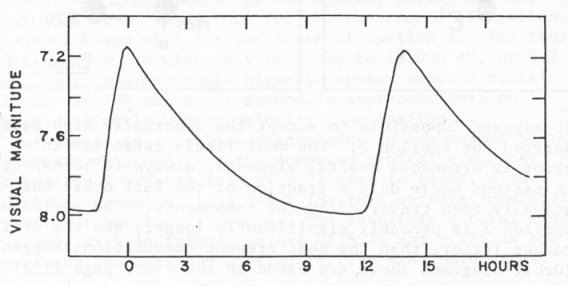
 |
RR Lyrae is the prototype of the RR Lyrae stars, which pulsate in radius and brightness over very short periods. RR itself changes by about a magnitude over a mere 13.6 hours, the brightness rising quickly to maximum that is followed by a slow decline. The star is brightest during maximum expansion velocity. The maxima and minima do not quite match those stated in the main text because of additional, and not-understood, variations. (From Burnham's Celestial Handbook, R. Burnham, Jr., Dover Publications, NY, 1978.) |